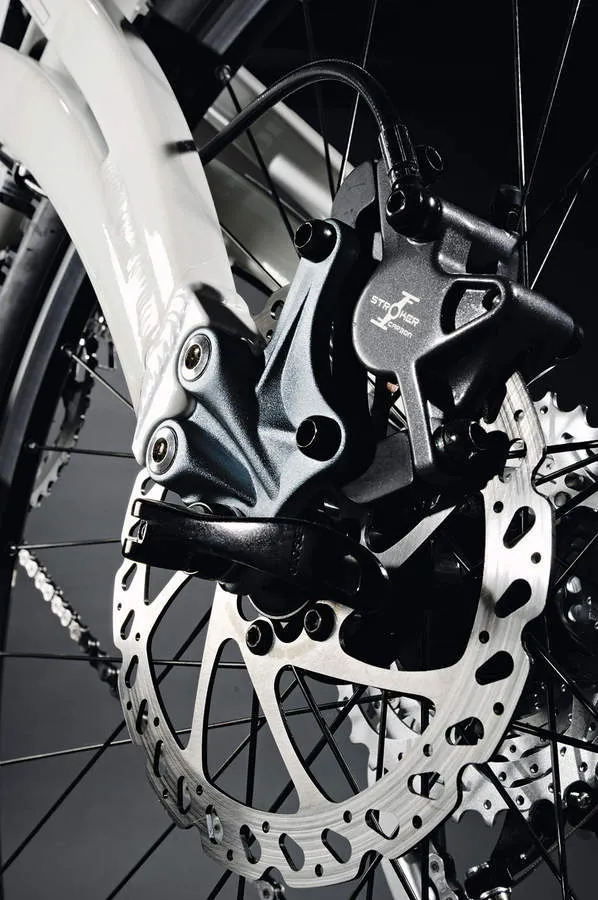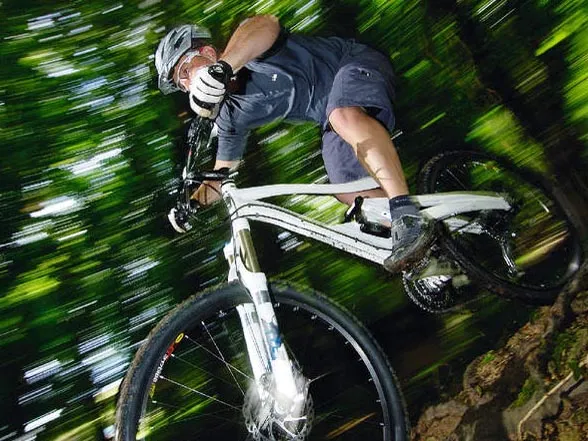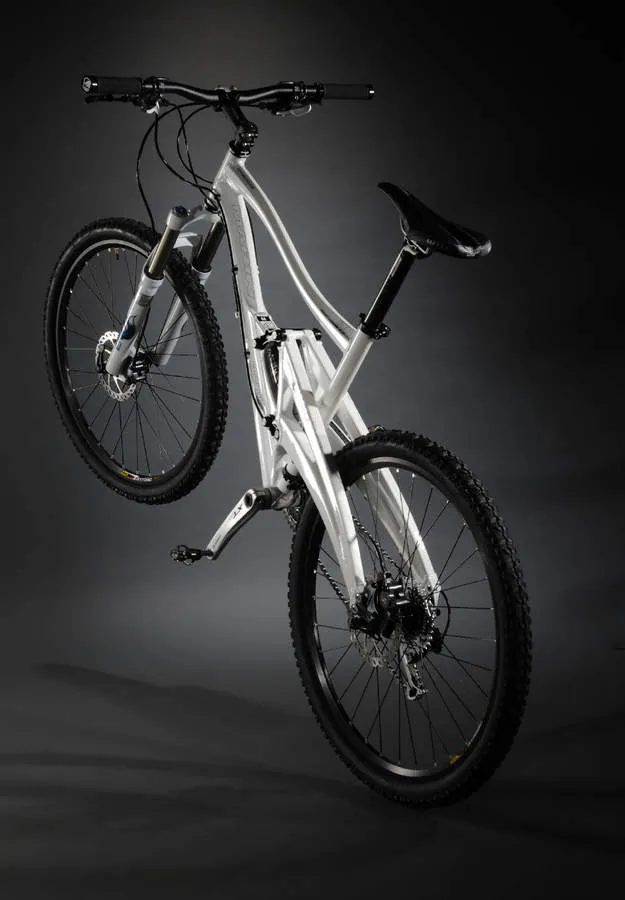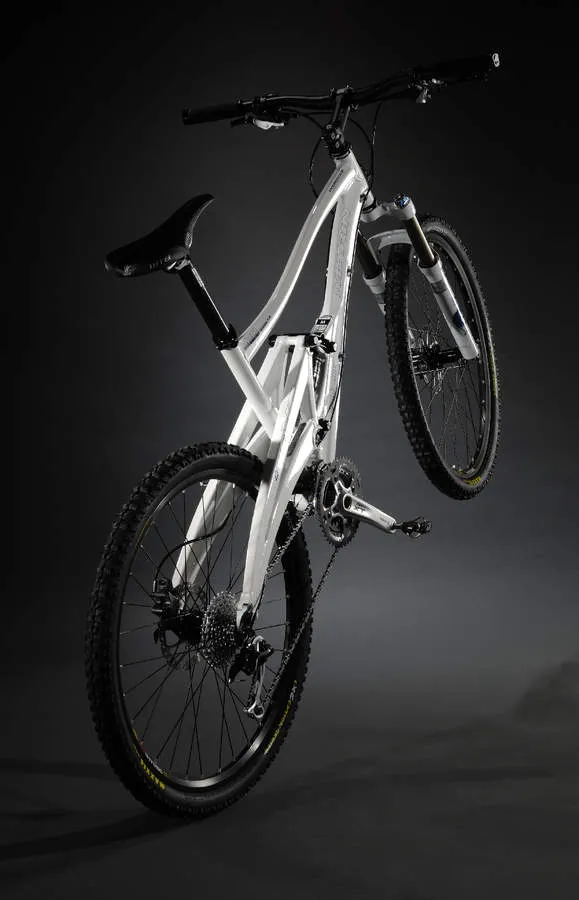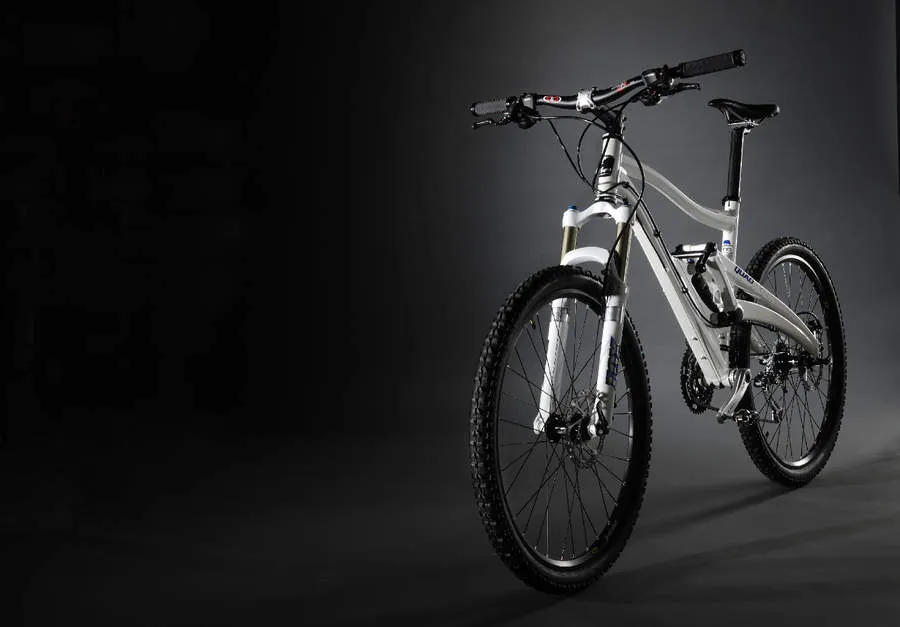Marin's white wonder was so popular in 2008 that only a few were left to buy even before What Mountain Bike named it its Bike of the Year. Now it shares the Mount Vision name with the whole £1449-£3499 120mm Quad XC family. Can this capable chassis claim top honours for a second time?
There’s no doubt that Marin have significantly boosted the Mount Vision’s already aggressive, category-stretching performance. The sniff of extra handling stability and the increase in composure and control from new Fox shocks makes it faster in exactly the places other 120mm travel bikes falter.
The same communicative suspension and sorted cockpit put you in a superb place for pushing your own limits too. What’s more, all the UK-friendly advantages of decent mud room, lifetime-warranted bearings and a shielded shock will be more useful than ever as our weather gets even worse.
However, with the competition getting significantly lighter, it’s definitely the ‘wallop it’, not ‘whippet’ option. How well the new 100mm travel Marin Alchemist fills that faster, racier gap and creates a compelling double act we’ll have to see. How much other brands hike their prices to reflect their costs will also become clearer as the frantic Christmas spending spree approaches.
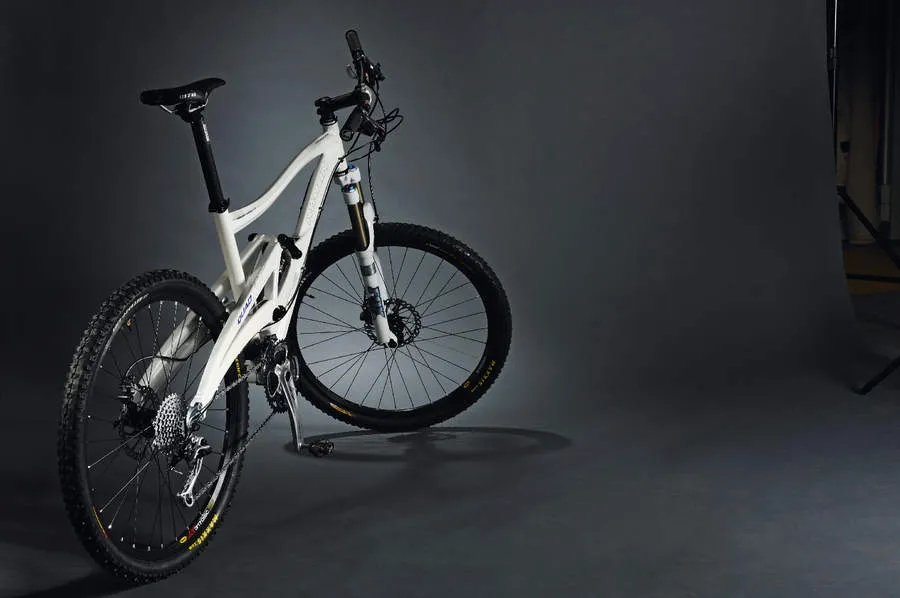
Ride & handling: fast and feisty on the descents, but also a determined climber
The Mount Vision was already pushing the aggressive limits of the 120mm cross-country/trail category, but the new version stretches them even further.
The Fox F120 fork, with its screw-through axle and noticeably stiffer, more incisive reactions is the big difference. Right from the first ride we were hitting radical lines and cleaning sections at speeds that were previously just out of our grasp. It also tracked and kept us online and rolling in switchback turns, when a quick-release fork would have twisted and jackknifed.
Damping improvements at both ends make the bike noticeably more settled and stuck to the ground, despite the loss of tyre volume. How much the slightly slacker and lower angles contribute compared to the suspension is hard to tell, but they don’t hinder its properly hardcore character on the descents.
The ease with which you can pick up and place the front end, plus the infectiously ballsy frame, will certainly see you hammering stuff you wouldn’t have even prodded before. In fact, we’d probably categorize it as the lighter end of the 140mm travel Orange Five/ Commençal Meta 5.5/Santa Cruz Blur LT range rather than among the 120mm travel ‘under-25s’ (pounds, that is) group.
But the shorter travel is obvious when you come up hard against the end stroke progression. We can see this even faster, more feisty bike having a few popped rear tubes before you learn to keep tyre pressure higher.
The upside is a taut, pedal-eager muscularity that separates it from some of the (theoretically) more efficient and longer-travel, slower-responding bikes around. Add the extra length in the frame, and the Marin makes for an impressively determined climber.
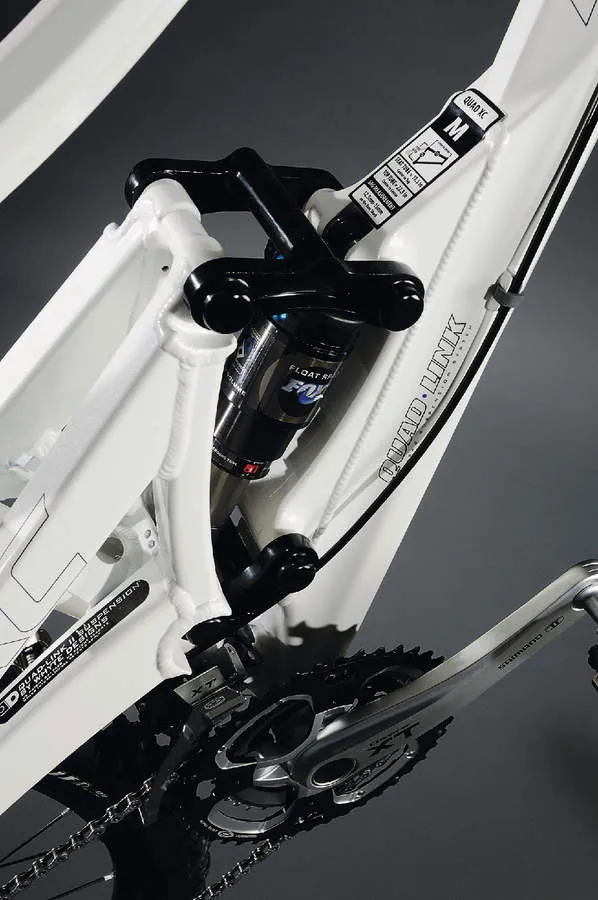
Frame: no major changes but minor tweaks improve handling
You could be forgiven for thinking nothing has changed on the chassis apart from slightly repositioned stickers. Geometry-wise, a half-degree slacker head angle kicks the front centre (distance from front wheel axle centre to bottom bracket) 5mm forwards from last year, though. The bottom bracket drops by a similar amount, too.
Marin designers Andy Jeffries and Ian Alexander actually spent hours designing and trying more radical tweaks, though. “We played with different dropouts which were 5mm and 10mm longer, as we always felt the bike had a tendency to lift at the front wheel on steep climbs," said Ian. "However, we actually found we lost the bike’s descending and agility. Adding a little in the front has improved the bike in all areas. Lowering the BB has improved the bike’s high-speed handling too."
The rest is a classic case of ‘if it’s selling out before summer, don’t change it’. The long top-tube gives plenty of breathing space when you’re beasting yourself. Unlike some competitors, you can drop the seat post right down for descending too. Thinner 2.1in tyres leave even more mud space and ‘lifetime warrantied’ bearings mean replacements are free if you wear them out.
Finally, the replaceable rear dropouts can be switched for Maxle screw-through versions to noticeably reduce rear wheel yaw. Despite obvious advantages and no real disadvantages, this concept has yet to catch on, but we reckon it will be as ‘big’ as screw-through forks are becoming, and Marin are one of the few brands to be well ahead and ready.

Equipment: Fox shocks, Shimano XT and Hayes discs
While they haven't gone for the obvious Maxle Lite-equipped RockShox Reba 120 fork match, Marin have gone screw-through with the Fox F120. Add structural and damping changes for 2009, and you’re looking at significantly stiffer and smoother performance than the already excellent 2008 piece. The rear shock, a Fox Float RP23, also gets noticeably improved damping.
Shimano XT still provides benchmark transmission performance, while adaptable Hope hubs on Mavic rims are a great wheelset. Thinner Maxxis High Roller tyres replace bigger, slower WTBs but still keep winter/wet grip levels high.
Hayes Stroker brakes replace Avid Juicys; they’re impressively powerful and feel good through their pimpy carbon levers too. Broad Easton bars give ‘power steering’ leverage advantages, while bolt-on grips with crashproof metal end caps secure your grasp on control.
It is significantly heavier than less chaos-capable 120mm bikes, though, and you will feel that near-28lb weight on long hauls. We also noticed a few toe taps on rocky trails and occasionally the front end wandered wide and lifted as we tried to swing it up round a turn.
